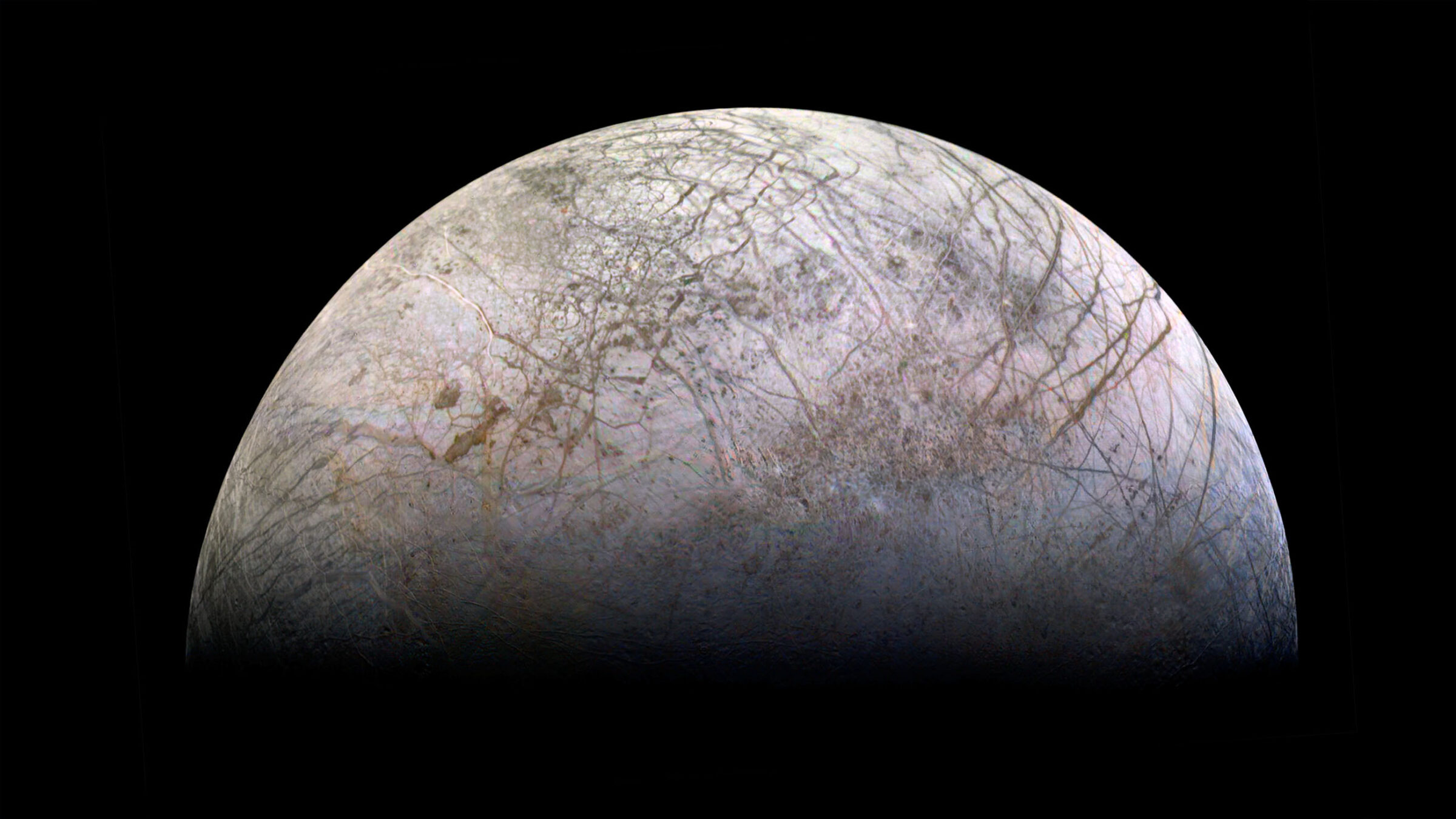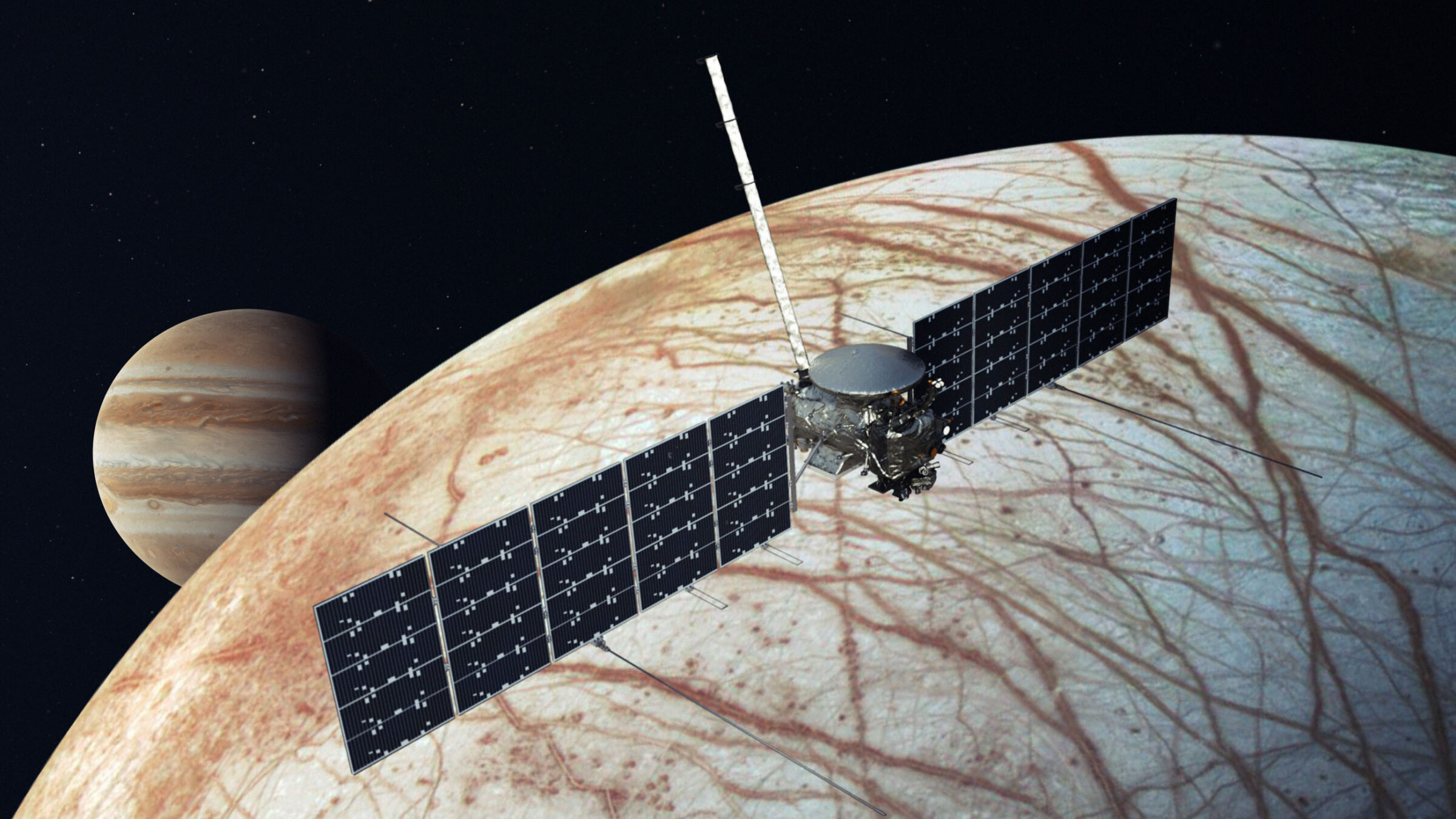Europa Clipper, a mission to Jupiter's icy moon
Highlights
- Jupiter's icy moon Europa has a saltwater ocean with more than twice the amount of water in Earth's oceans.
- Europa may have the necessary ingredients for life as we know it: water, energy, and complex molecules known as organics.
- NASA's Europa Clipper mission will launch in 2024 and arrive at Jupiter in 2030 to determine whether Europa and similar worlds with global oceans could support life.
Why We Need Europa Clipper
Life on Earth requires three things to thrive: a source of energy like sunlight, a liquid solvent like water, and elements like carbon that can form complex molecules known as organics.
Jupiter's icy moon Europa may have all of these things. Slightly smaller than Earth's Moon, Europa is covered with an ice shell roughly 20 kilometers (12 miles) thick. Beneath that lies a liquid saltwater ocean up to 150 kilometers (100 miles) deep with more than twice the amount of water in Earth's oceans. No sunlight reaches Europa's ocean, but vents on the ocean floor may release heat from the moon's core. Similar vents in the deepest, darkest parts of Earth's oceans can be found teeming with life — no sunlight required.
Jupiter offers another potential source of energy: the planet's magnetic field traps high-energy particles from our Sun and accelerates them into Europa's ice, possibly creating metabolism-driving molecules like methane, ammonia, and hydrogen.
NASA's Europa Clipper spacecraft will launch in 2024 on a SpaceX Falcon Heavy rocket on a mission to determine whether Europa can support life. Arriving in 2030, it is the first dedicated mission to explore a world besides Earth with a global ocean, known as an ocean world. By determining whether Europa has the right conditions for life, Europa Clipper will help us understand the prospects for life on other ocean worlds in our solar system and beyond.
A mission to Europa has long been one of the scientific community's top priorities. Planetary Society members helped make the mission happen by sending tens of thousands of letters to their congressional representatives, sponsoring events in Washington, D.C. to bring together scientists, politicians, and space advocates, and working with Congress to help get the mission funded. NASA formally greenlit the mission in 2015.

How Europa Clipper Works
Europa Clipper will orbit Jupiter instead of Europa directly, spending the bulk of its time outside of the planet's intense radiation field. The spacecraft will periodically dive through Jupiter's radiation, fly by Europa for data collection, and then flee the scene. This strategy will allow Europa Clipper to study the moon for years rather than days or months.
Including its solar panels, Europa Clipper spans 22 meters (72 feet), longer than a basketball court. The spacecraft is packed with a wide range of science instruments
to scan Europa from above and directly sample the moon's tenuous
atmosphere.
A radar instrument will map Europa's ice, while a magnetometer determines the depth and salinity of the ocean. Color and infrared cameras will map the surface in color and search for hot spots where the ocean may be seeping up through the ice shell. Spectrometers will determine the composition of the surface and scan any plumes spouting water into space. The spacecraft also has tools to directly sample Europa's atmosphere, including possible ocean water and surface particles shot into space by Jupiter's radiation.
Europa Clipper will also scout locations where future space missions might land. One mission under consideration by NASA would spend a month on Europa's surface,
feeding samples into instruments designed to detect organic materials.

Support missions like Europa Clipper
Whether it's advocating, teaching, inspiring, or learning, you can do something for space, right now. Let's get to work.


 Explore Worlds
Explore Worlds Find Life
Find Life Defend Earth
Defend Earth


